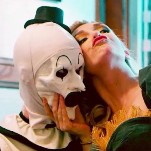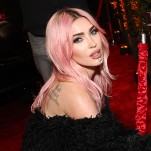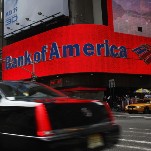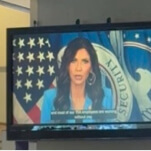Dolly Parton Can Be Whatever You Need Her to Be
EntertainmentAfter writing a long tribute to Dolly Parton’s stop in Queens for her current Pure and Simple tour, during which I sobbed hysterically and noted nothing but her goodness and beauty, I was invited to fan tribute event Dollypalooza. While I didn’t cry, I once again found deep meaning in Dolly Parton’s work and fandom.
The event was in the dark and spacious underground theater at (Le) Poisson Rouge, which never quite filled up, but was energized with excitement for the various Dolly-inspired acts on stage. The theme, aside from general Dolly-ness, was “Dolly for President.”
With me was my friend Claire, with whom I saw Dolly Parton at Radio City Music Hall in 2008 and who was having her first night out since the birth of her child. We proceeded to get wrecked during the pre-show trivia game, which Claire would definitely have won if she’d actually signed up. She eventually got brave enough to jump on stage for a Dolly Dress Up Contest, which included a contestant who described her look as “Dollyoncé” and the eventual winner, Bill the Cowboy. He deserved it.
The show was a mix of performance art, burlesque, and drag with work from Tammy Cannons, Darlinda Just Darlinda, Lady Quesa’Dilla and Dolly Parton cover band Doll Parts—their variances were a testament to how Parton’s long discography spans modes. Cannons’ wild dancing tribute to the trashier aspects of Parton’s history was the complete opposite of Sequinette’s “female-to-female” drag performance as the Dumb Blonde version of Dolly, in which her awesome beauty became the most haunting aspect of her stage time:
-

-

-

-

-

-

-

-

-

-

-

-

-

-

-

-

-

-

-

-

-

-

-

-

-

-

-

-

-

-

-

-

-

-

-

-

-

-

-

-








































